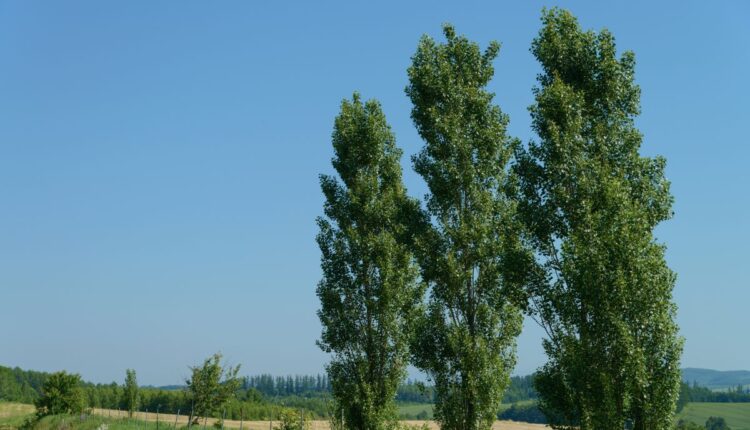Agroforestry in Tribal Areas: Agroforestry has improved the economic condition of tribal communities. The establishment of self-help groups (SHGs) and cooperatives has increased women’s participation, leading to community empowerment. For example, the establishment of Van Dhan Vikas Kendras under the Pradhan Mantri Van Dhan Yojana has provided entrepreneurship opportunities to tribal communities.
Agroforestry has emerged as an effective solution to provide livelihood and economic stability to tribal communities in today’s time. Which is while maintaining the cultural identity and environmental balance of tribal communities.
Forests have an important place in tribal communities. They have been dependent on forests for centuries, which has developed their lifestyle and traditions. However, their livelihood has been adversely affected by increasing population, deforestation and the impact of modern development. One solution to this is agroforestry.
Importance of Agro-Forestry in Tribal Areas
Agro-forestry is a system in which agriculture and forestry are coordinated. This system is especially important for tribal communities because-
1. Use of traditional knowledge: Tribal communities have deep traditional knowledge about forests and agriculture. Agro-forestry promotes sustainable development by using this knowledge.
2. Environmental balance: These systems help in increasing soil fertility, water conservation and preserving biodiversity.
3. Economic benefits: Production of various products such as fruits, timber, medicinal plants and non-timber forest products (NTFPs) increases the sources of income.
Different Models Of Agro-Forestry
1. Tree and crop model: In this model, crops are cultivated along with trees in the fields, which leads to more land use and increases the income of farmers.
2. Tree and animal husbandry and pasture model: This system includes animal husbandry and pasture management along with tree plantation, which provides overall livelihood security.
3. Medicinal and non-timber forest products (NTFP) based model: In this, medicinal plants and other NTFPs are cultivated, which are economically valuable due to high demand in the market. provide benefits.
Successful Examples and Case Studies
1. Odisha: Tribal farmers here have increased the production of NTFPs such as Mahua, Tendu leaves and Lac by adopting agroforestry, thereby increasing their income.
2, Chhattisgarh: Tribal communities in Bastar district have adopted teak and bamboo plantations along with paddy cultivation, which has provided them with additional income sources.
3. Jharkhand: Tribal farmers here have achieved success in tassar (kosa) silk production through agroforestry, which has become their main source of livelihood.
Economic Impact and Community Development
Agroforestry has improved the economic condition of tribal communities. The establishment of self-help groups (SHGs) and cooperatives has increased women’s participation, leading to community empowerment. For example, the establishment of Van Dhan Vikas Kendras under the Pradhan Mantri Van Dhan Yojana has provided entrepreneurship opportunities to tribal communities.
Government Schemes and Initiatives
1. Pradhan Mantri Van Dhan Yojana: The scheme aims to increase the income of tribal communities through value addition of forest produce. Under this, Van Dhan Vikas Kendras are established, where skill training and market linkages are provided.
2. National Agroforestry and Ecology Development Board (NAEB): This board operates various schemes to promote agroforestry, ensuring environmental balance and livelihood security.
3. Financial assistance under Article 275 (1): Under this provision of the Constitution, special financial assistance is provided to the states for the development of tribal areas, including agroforestry projects.
Challenges and Solutions
Although agroforestry has many benefits, there are some challenges in implementing it:
1. Lack of awareness: Many tribal communities lack information about the benefits of agroforestry. As a solution, awareness programmes and training workshops should be organised.
2.Lack of financial resources: Agroforestry projects require initial investment. Government and NGOs should provide financial support and credit facilities.
3.Access to market: Lack of proper market for the products prevents farmers from getting proper prices. Market linkages should be established through cooperatives and marketing networks.
Agro-Forestry: A Sustainable Livelihood model
Agroforestry is emerging as a sustainable livelihood model in tribal areas, which ensures environmental balance, economic stability and cultural preservation. With the combination of government schemes, community participation and traditional knowledge, this model can play an important role in the overall development of tribal communities.
Contact us- If farmers want to share any valuable information or experiences related to farming, they can connect with us via phone or whatsApp at 9599273766 or you can write to us at [email protected]. Through Kisan of India, we will convey your message to the people, because we believe that if the farmers are advanced then the country is happy.



